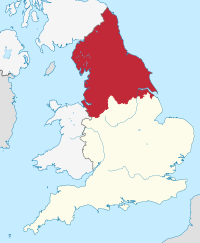
Photo from wikipedia
Objectives The study assesses households’ catastrophic health expenditure (CHE) by income group, urban versus rural area, and influencing factors in the Northern midlands and mountainous areas of Vietnam. Design/setting A… Click to show full abstract
Objectives The study assesses households’ catastrophic health expenditure (CHE) by income group, urban versus rural area, and influencing factors in the Northern midlands and mountainous areas of Vietnam. Design/setting A cross-sectional study with the four waves of data from 2014, 2016, 2018 and 2020 Vietnam household living standards surveys was used. Participants The number of participants in this study were 1658, 1661, 1659 and 1662 households in 2014, 2016, 2018 and 2020, respectively. We included households residing in the Northern midlands and mountain areas of Vietnam. Outcomes measure We examined out-of-pocket health payments and capacity to pay by income groups and place of residence, the incidence of CHE and impoverishment. A logistic regression model was used to examine the influence of demographic and socioeconomic characteristics on CHE. Results The findings showed a remarkable decrease in CHE between 2014 and 2016, followed by a considerable increase between 2016 and 2018. The CHE rates in the region were between 3.5% and 5%, with the highest value observed in 2014. In addition, the differences in household CHE rates according to income and place of residence were observed. The results also indicated that medical impoverishment ranged between 3.4% and 3.9%. Overall, factors such as the burden of disease, rural settlements, increasing use of healthcare services, visiting private health facilities and having an old-aged person in the household were significantly and positively associated with CHE. By contrast, households that were wealthier, participated in health insurance, had a household head employed and female-headed households, were negatively associated with CHE. Conclusions The findings provide useful information that can guide policy-makers to design policies, and interventions necessary to reduce CHE in the region, narrow the gap between the rich and the poor, the rural and urban settlements, and ensure universal health coverage.
Journal Title: BMJ Open
Year Published: 2022
Link to full text (if available)
Share on Social Media: Sign Up to like & get
recommendations!